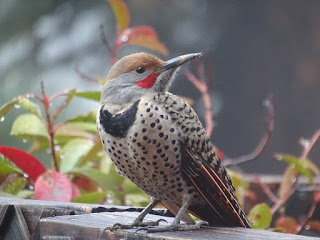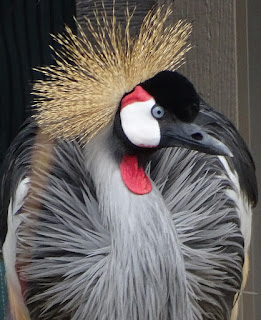Chasing down a bird that you've never seen before is part of the thrill of birding. When a new bird shows up in a nearby location unexpectedly, it's hard to resist. For many of us, there are too many restraints like a job, school, family or lack of funds to drop everything in search of the bird. However, if everything aligns just right so that you can go off on the adventure, there is no guarantee the bird won't use its wings and fly off before you arrive. But, if you find the bird, aaaahhhh.....it's worth it!
My own bird chase began 2 weeks ago. White-winged scoters were seen at the Salton Sea. They aren't regularly seen here so off we went on a 4-hour roundtrip trek to this birding hotspot in the desert.
When we arrived, we found hundreds of Bonaparte's gulls circling in the water and dipping their beaks to the surface of the water. These winter residents spending their breeding season in northern Canada and Alaska.
Hundreds of probing Black-necked Stilts filled the shorelines.
We found the resident Green Heron along its crowded pond but no scoters.
When you don't succeed with your "chase" bird, it's best to go to plan B. In our case, Dos Palmas, a remote oasis managed by the Bureau of Land Management, BLM, was a great option.
We parked our car at the gate and walked over a mile to the distant beckoning palm trees. As we walked along this desolate dirt road, we could envision the early traveler's stagecoach stopping here for respite.
The ponds here are managed to benefit the rare desert pupfish and Yuma clapper rails but this protected wetland habitat benefits lots of wildlife. This time of year, Ring-necked ducks and Canvasbacks are a few of the wintering ducks that have found refuge here. While we were in this remote, desolate spot, we came across another birder from the Desert Cities Birdclub! What a fun surprise! Obviously, birders are attracted to the same places.
We left this beautiful spot without our "bird". A few days later, we discovered on Ebird that our scoters were seen again. The challenge was before me. Should I spend another 4 hours traveling in hopes of finding these birds again? They aren't even colorful! What about the million things I should be doing instead with Christmas coming? Mmmmm....Sure, why not! Off I went but this time, I was by myself.
If I wasn't successful, at least I could buy more delicious dates from the Oasis Date Farm. Yum!
Luck was on my side. On a clear, sunny warm day at the beautiful Salton Sea, I found a male and female White-winged Scoter. This distant shot is not too impressive, I know, but it is special to me. If you have ever searched for birds, gold, Loch Ness monsters or Pokemon Go characters, you know how content I felt.
 |
| White-crowned Sparrow |
Another type of bird chasing and counting has been occurring over 100 years. People from all over the country participate in the annual Audubon Christmas Bird County. Last Sat, Idyllwild held its CBC. Our group of birders found 110 species. It's not too late to join a CBC. They are lots of fun! One of our counters, Jenn Hajj wrote a beautiful Christmas song all about doing a Christmas bird count. She gave me permission to post her video here. Check it out! It will make you smile! Enjoy!
Photos and content by Robin Roberts.
Click on photos to enlarge.
































































